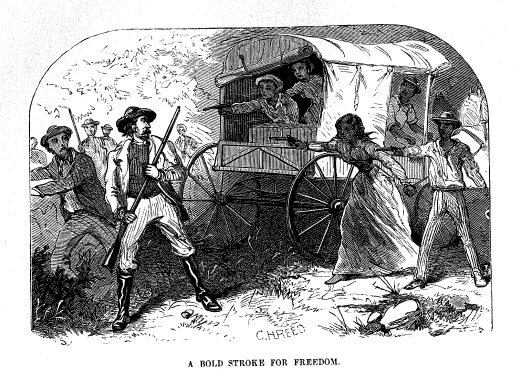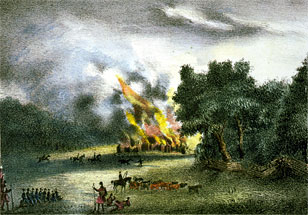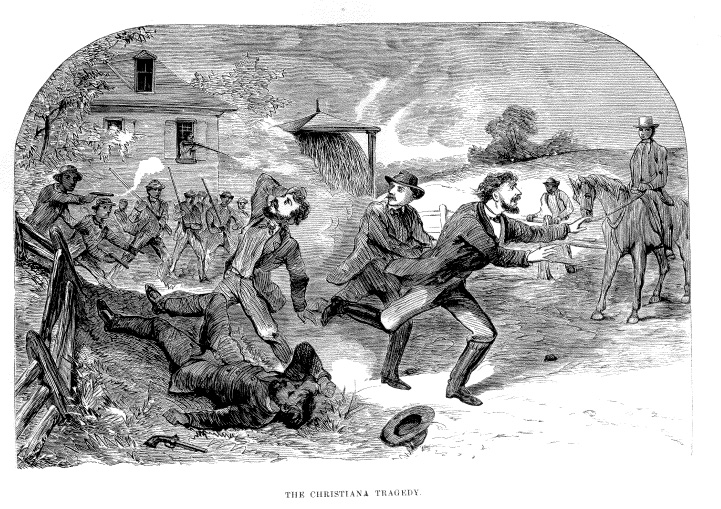1084 words
VIDEO: “Did John Brown Have A Military Plan?” – Dennis Frye TRT: 5:24https://youtu.be/shbgr0Y90c0

Did John Brown have a military plan? John Brown was a good military strategist and a very good military technician. Now, I am certain that everyone who just heard me say that says you are crazy. John Brown had no military plan; in fact, he was an idiot. But the point I’m making is and, bear with me here for a moment, is that Brown has not been studied as a military man. Now there’s been many books written on Brown in his religion and how that influenced his decision. There have been books written on Brown on whether he was sane or insane. There have been books written on Brown in terms of how strong was he as an abolitionist. There have been books written on Brown as to how he separated, divided. carved the United States apart. They’re much grander, more philosophical perspectives. But if you get down to it, what was John Brown doing? Brown was making war against slavery. To make war, you must have a military plan and Brown had one. He had one and actually it’s a pretty good one. It’s based on the concept of guerrilla warfare. It’s based on the principle that we’re going to have small forces of men who are well-trained, well-disciplined who have specific goals in mind who are going to strike hard strike precisely and then move from one target to another so the enemy can never catch up, and pretty specifically the plan is this: the mountains are the key to the plan. We’re going to use the mountains of Virginia and Tennessee and Georgia and Alabama and North Carolina. Those mountains become our fortresses.
We’re going to create what I refer to as the highway to freedom which is similarly an underground railroad, except this: Brown intends to move masses of people rather than individuals here and there and give them protection as they move from one fortified location to another in the mountains of Appalachia moving from south to north. He intends to seize the weapons of Harpers Ferry to ensure that he can defend these people. As he’s moving them from south to north, he has a base of operations, established a logistics base of operations, established with a railroad head in Chambersburg, Franklin county, Pennsylvania. It is a hotbed of underground railroad activity. This will be the termination of Brown’s venture, as he brings men, women and children journeying from the south across the mason-dixon line into Pennsylvania where he then will have plenty of support to further distribute former slaves north out of danger and into protection. So he’s got a good plan that is going to involve guerrilla tactics.



He’s going to hit strategic points and basically Brown’s military plan is going to focus on economic disruption. He intends to use military methods to create economic chaos in the south and what I mean by that is that basically Brown’s military plan is to seize property, to take property, slaves being property; and if that slave property disappears, you lose money financially. You begin to lose and if the slave investments that you have suddenly disappear, you become bankrupt. So by quick hitting tactical guerrilla maneuvers at strategic key positions throughout the deep south, the middle south and the upper south Brown knows that he can use guerrilla military tactics to undermine the economy of slavery. This will be a protracted war. It is not conventional army-against-army. It is definitely hit-chase-strike-move, small compact disciplined trained and he had experience in Kansas with this kind of warfare. He intended to bring his Kansas experience into Virginia and the rest of the south. He had a very defined plan. He did not share. He kept it secret. Very few knew about it, except for his principal lieutenants. Even his main financial backers in New England the north didn’t know what the plan was. John Brown intended to strike a blow against slavery, but, in his mind, he had it outlined as to how he would perform it.
Other references:
Mitchell, William M. (1860). “The underground railroad [graphic].” London, UK: Tweedie. Print.
Mitchell, William M. (1860). “The underground railroad [graphic].”
Internet Archives: Digital Library of Free Books, Movies, Music, and Wayback Machine. 27 Oct. 2009. Web. 5 May 2010.
Still, William. (1872). “The Underground Railroad: A Record of Facts, Authentic Narratives, Letters, &c., Narrating the Hardships, Hair-Breadth Escapes and Death Struggles of the Slaves in Their Efforts for Freedom, As Related by Themselves and Others, or Witnessed by the Author.” Philadelphia, PA: Porter & Coates. Print.
Still, William. (1872). “The Underground Railroad: A Record of Facts, Authentic Narratives, Letters, &c., Narrating the Hardships, Hair-Breadth Escapes and Death Struggles of the Slaves in Their Efforts for Freedom, As Related by Themselves and Others, or Witnessed by the Author.”
Internet Archives: Digital Library of Free Books, Movies, Music, and Wayback Machine. 27 Oct. 2009. Web. 5 May 2010.
OR
Still, William. (1872). “The Underground Railroad: A Record of Facts, Authentic Narratives, Letters, &c., Narrating the Hardships, Hair-Breadth Escapes and Death Struggles of the Slaves in Their Efforts for Freedom, As Related by Themselves and Others, or Witnessed by the Author.”
Quinnipiac University. Aug., 2003. Web. 5 May, 2011.
Pathways to Freedom: Maryland and the Underground Railroad
Underground Railroad Web Quest. — Web. 5 May 2011.
Video:
Frye, Dennis. “Did John Brown Have A Military Plan?.” APUS: Civil War Scholars. 14 April 2011. Web. 2 May 2011.
Flickr Set:
File:Pilaklikaha.jpg. Wikipedia English. Latest update 27 Oct. 2009. Web. 2 May 2011.
p124i.jpg
Still, William. (1872). “The Underground Railroad: A Record of Facts, Authentic Narratives, Letters, &c., Narrating the Hardships, Hair-Breadth Escapes and Death Struggles of the Slaves in Their Efforts for Freedom, As Related by Themselves and Others, or Witnessed by the Author.” Philadelphia, PA: Porter & Coates. Print.
Still, William. (1872). “The Underground Railroad: A Record of Facts, Authentic Narratives, Letters, &c., Narrating the Hardships, Hair-Breadth Escapes and Death Struggles of the Slaves in Their Efforts for Freedom, As Related by Themselves and Others, or Witnessed by the Author.”
Internet Archives: Digital Library of Free Books, Movies, Music, and Wayback Machine. 27 Oct. 2009. Web. 5 May 2010
p350i.jpg
Ibid.
